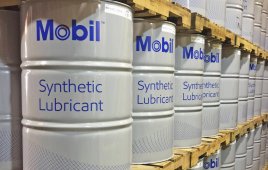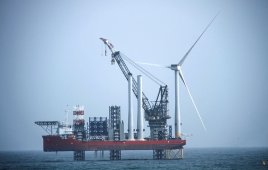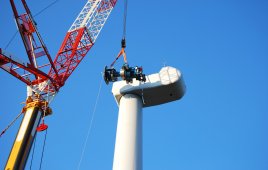Oil quality is a decisive factor for gearbox service life, but changing it is time consuming and costly. Thus, turbine operators are always looking for ways to stretch oil-change intervals. At least two companies have developed ways to monitor and maintain oil to extend service life and improve overall performance.
Gearbox wear is usually determined by operating conditions and stresses exerted on components. Hence, without a lab analysis gear-oil life is difficult to estimate. Impurities, the degradation of additives, and oil-aging products generated during operation all contribute to premature aging of gear oil. Most gearbox manufacturers recommend no more than 36 months between oil changes. In some cases, the service life of gear oil is not met due to impurities that cause the main-flow filter to prematurely fail. Research shows that only a small percent of the main-flow filter’s dirt-holding capacity absorbs impurities. This was sometimes due to a deposit of oil-aging products that formed a seal over the main flow filter, causing its failure.
However, one O&M firm found that a recent kidney-loop filtration upgrade (for systems with a fine filtration level of 10µ or higher) improves oil quality and avoids some filter and oils changes recommended by the OEM. This reduces down times and some costly repairs. The kidney-loop filtration provides an oil flow to clean the gear oil independent of the main flow filter. The filter removes oil-aging products and particles larger than 3µ, as well as moisture. The company’s engineers estimate the filtration unit can extend intervals between gear-oil exchanges to 60 months.
Other filter manufacturers have ideas as well. For example, Parker Hannifin Corp’s philosophy about oil is to let it communicate when it needs changing and show how equipment in the nacelle is performing. How is this possible? Olli Rantanen, Product Manager with Parker’s Filtration division says magnetic pre-filtration can increase the lifetime of hydraulic filters up to 40%. “Further development in the use of patented media and element design have seen life of filter elements go from a nominal 3 to 6 months, up to 15, a significant reduction in maintenance costs for turbine owner,” he says.
In the past, wind turbine OEMs built fluid filtration systems by assembling components from different manufacturers. “While such systems worked reasonably well, hydraulic-component companies like Parker are now delivering complete Gearbox Health Maintenance Systems,” Rantanen explains. “These integrated systems include multiple functions including filtration (filters, pumps, valves) cooling, monitoring and conditioning and the related piping to connect the various components.” “By integrating multiple system components in a manifold block rather than piping the components individually, installation is simplified, in a more reliable, compact, and lighter unit,” he added.
Rantanen says another emerging trend for OEMS that must buy separate subsystems is to provide turbine-specific 3D-models of the hydraulic equipment, which can be imported directly into the 3D-CAD gearbox models or some preferred location in a CAD nacelle model. “This lets the hydraulic supplier take responsibility for the system and saves OEMs significant time to accelerate product to market, money, and resources.
“Companies are also using particle detectors for another level of contamination control. A few features of one include independent monitoring of system contamination trends, and early warning LEDs or digital display indicators that tell of low, medium, and high contamination levels,” says Rantanen.
Trends in oil monitoring allow minimizing or eliminating the use of bottle sampling. In this older monitoring method, an oil sample was tested in a lab and results relayed to O&M crews. “Results are now available in real time, instead of waiting days for lab results. This also allows planning the preventative maintenance for turbines, thus significantly reducing downtime and maintenance cost,” says Rantanen. WPE
Filed Under: Lubricants




